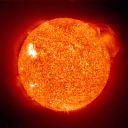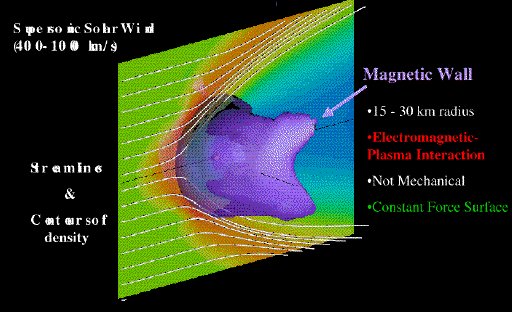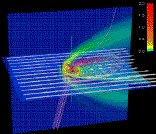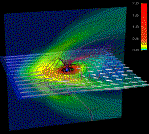Mini-Magnetospheric Plasma Propulsion (M2P2)
Investigators
| Mini-Magnetospheric Plasma Propulsion (M2P2) is an advanced plasma propulsion system that will enable spacecraft to attain unprecedented speeds, with minimal energy and mass requirements. The high efficiency and specific impulse attained by the system is due to its utilization of ambient energy, in this case the energy from the solar wind, to provide the enhanced thrust. Coupling to the solar wind is produced through a large scale magnetic bubble or mini-magnetosphere generated by the injection of plasma into the magnetic field supported by solenoid coils on the spacecraft. This inflation is driven by electromagnetic processes so that the material and deployment problems associated with conventional solar sails are eliminated. |
A schematic of how the M2P2 would interact with the solar wind.
The obstacle or mini-magnetosphere produce by the M2P2 is shown in purple.
The solar wind flow (white lines) is deflected around the obstacle and its
momentum is picked up by the spacecraft. The contours show the density of
the solar wind with red indicating enhanced densities as the solar wind piles
up at the obstacle and purple low density where the solar wind no longer
has access.
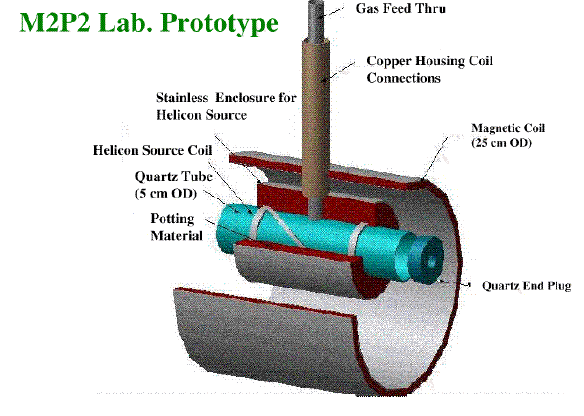
An early schematic of the device.
|
